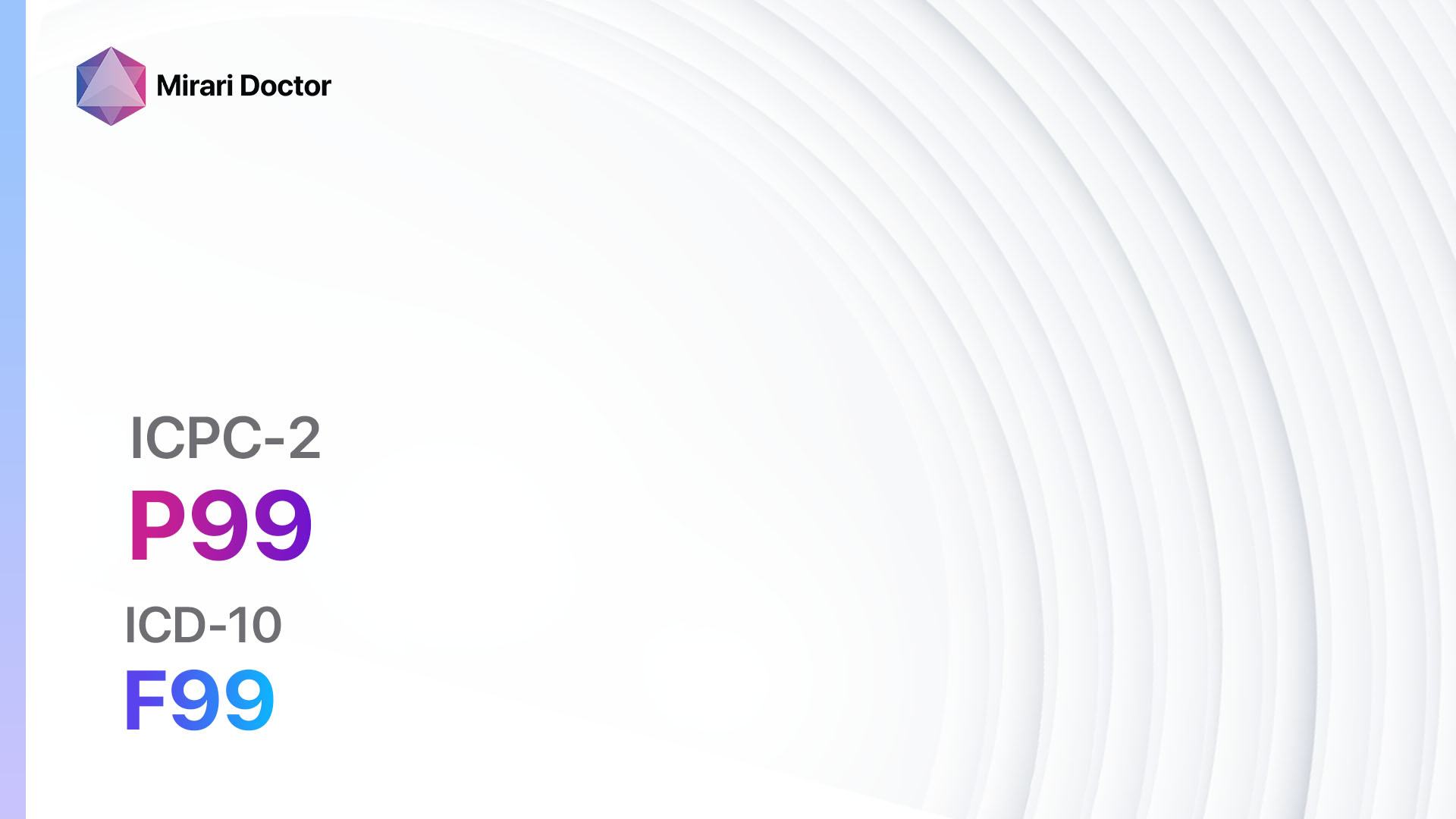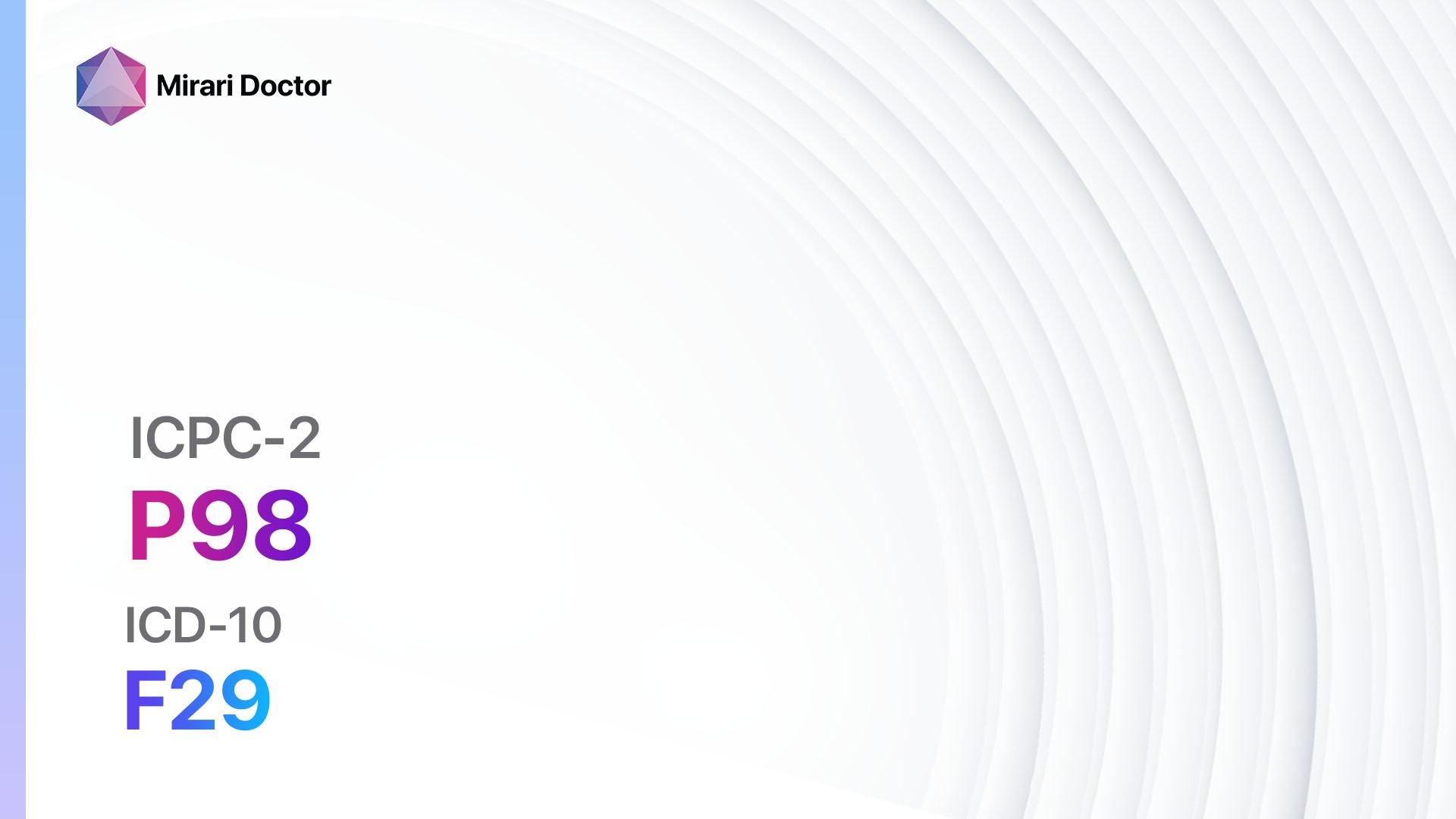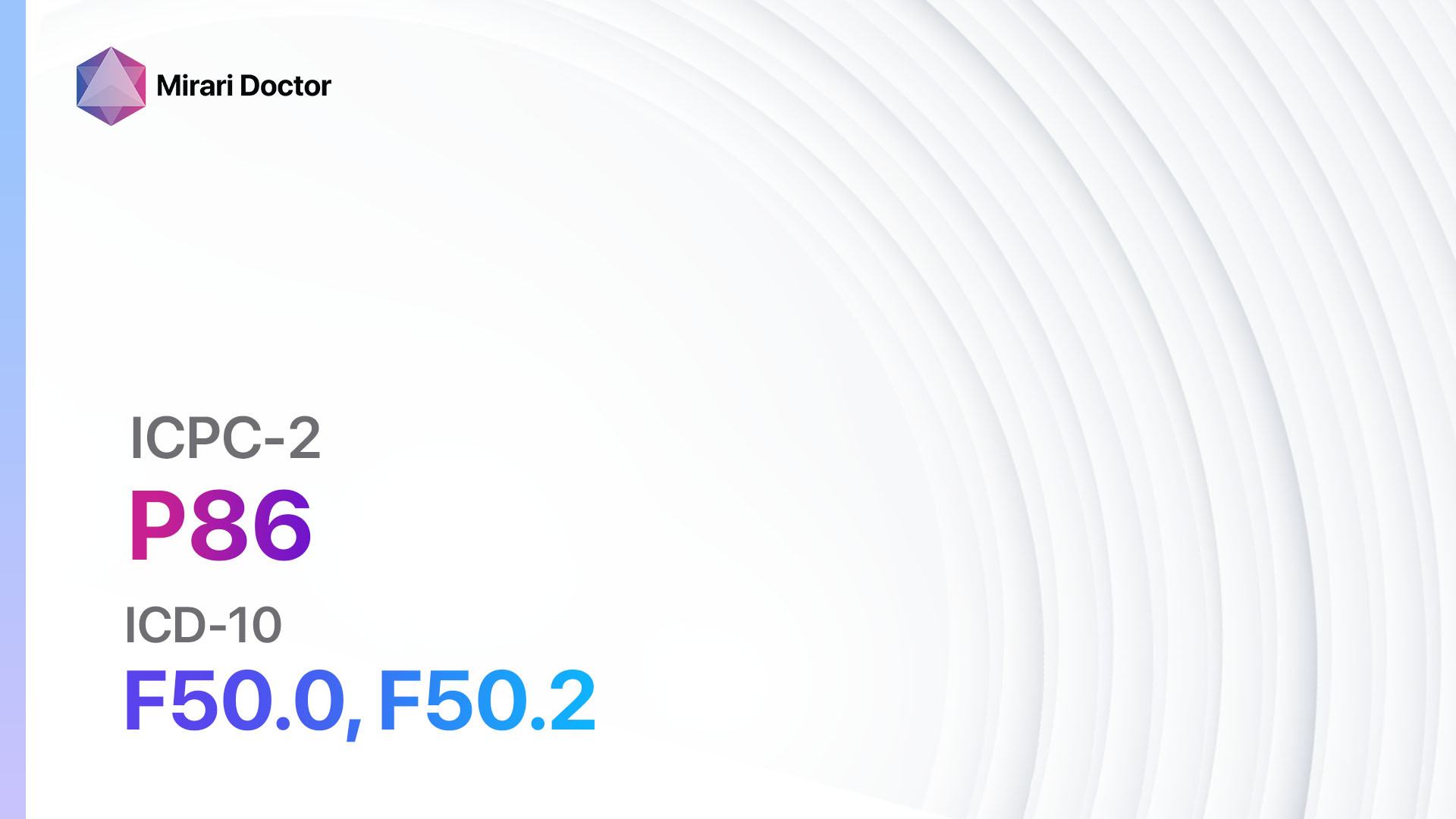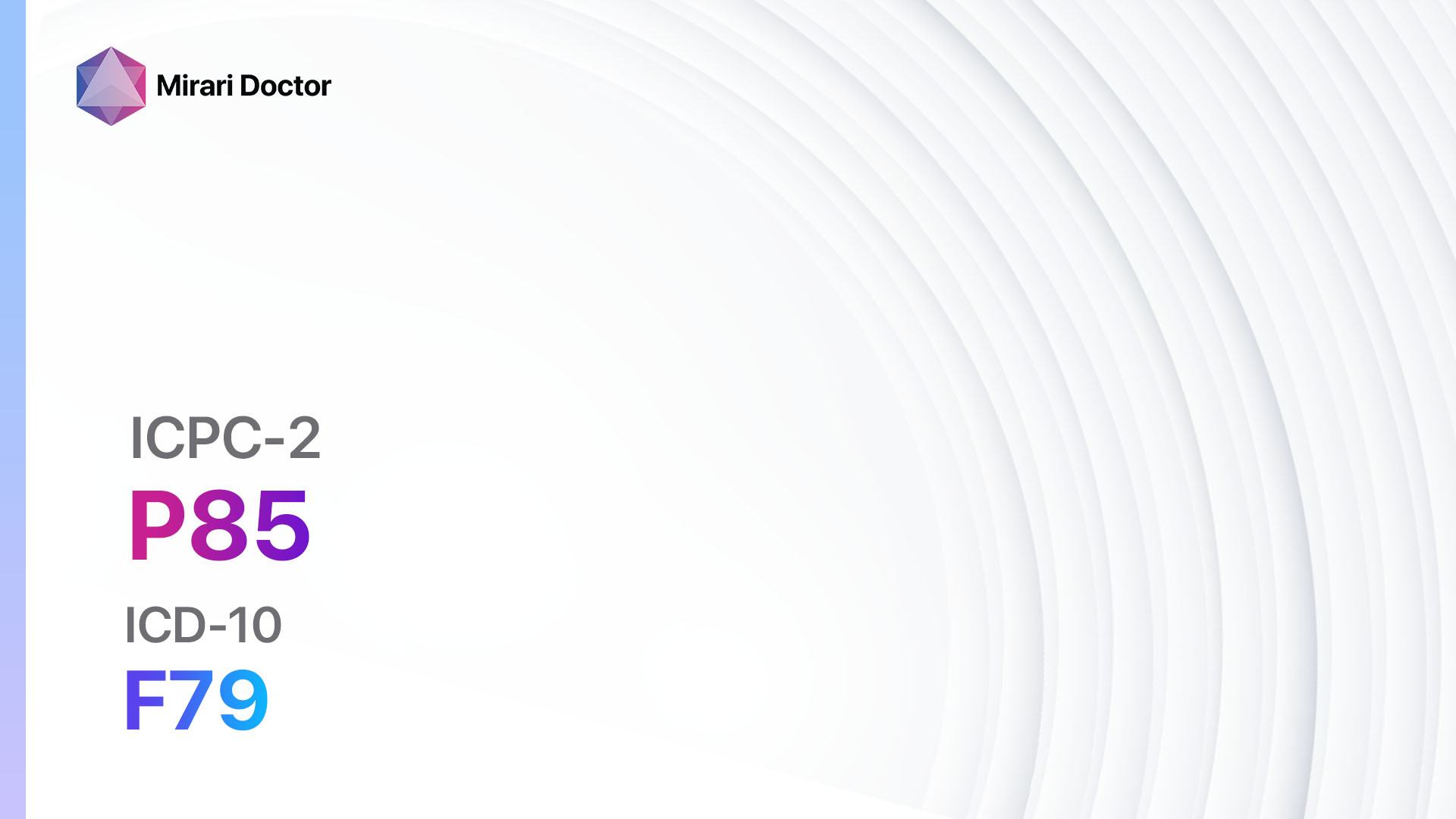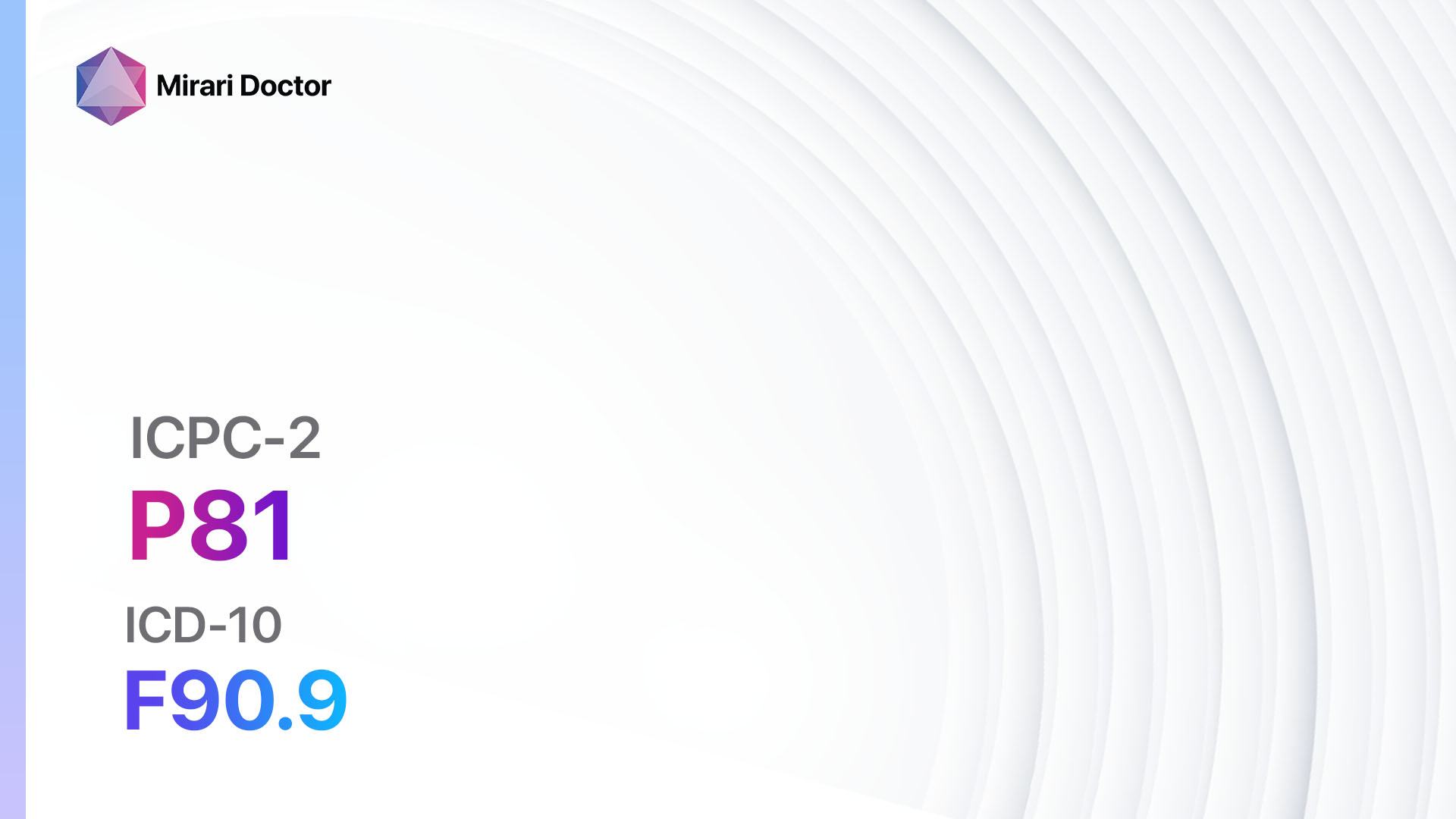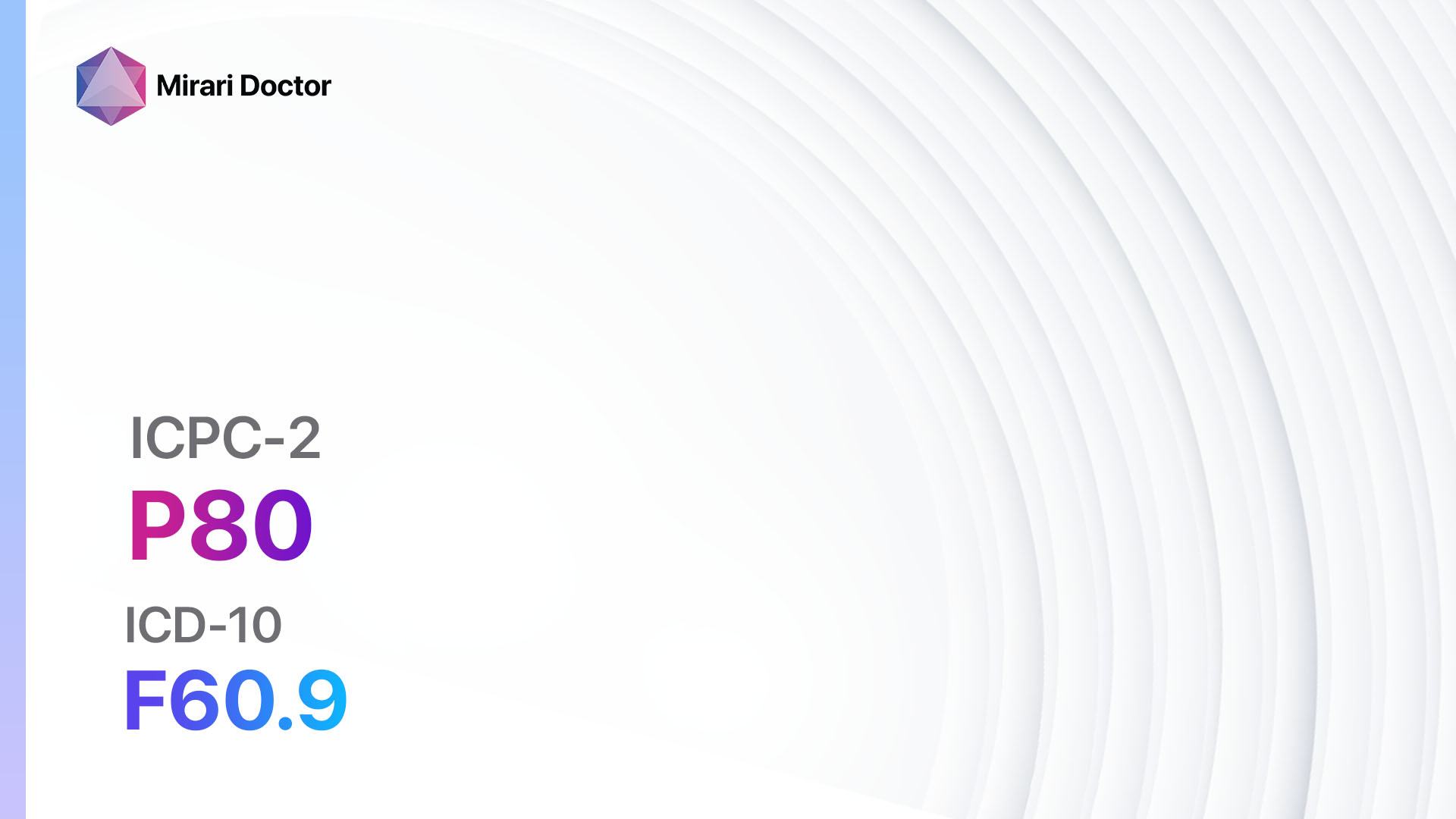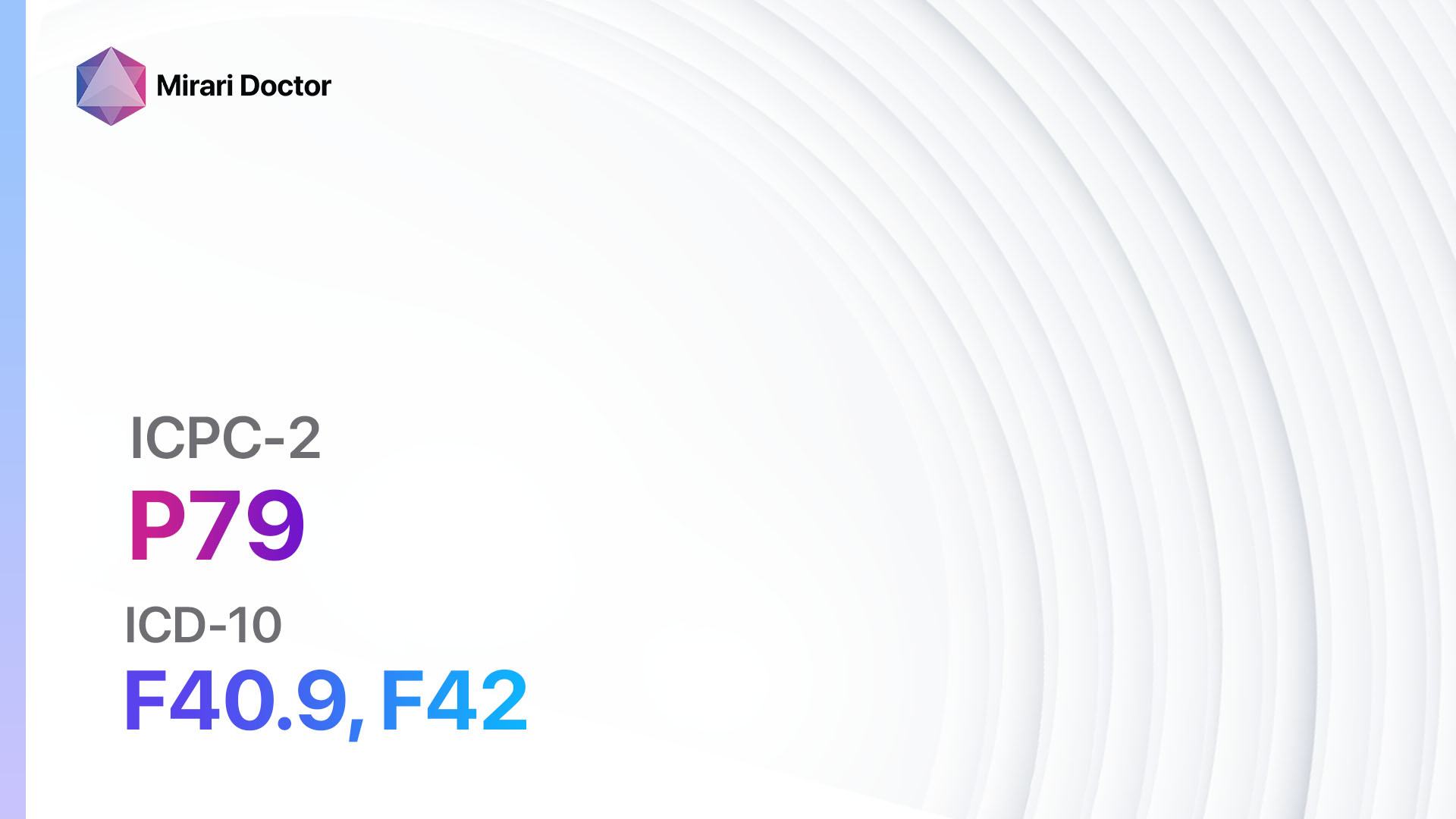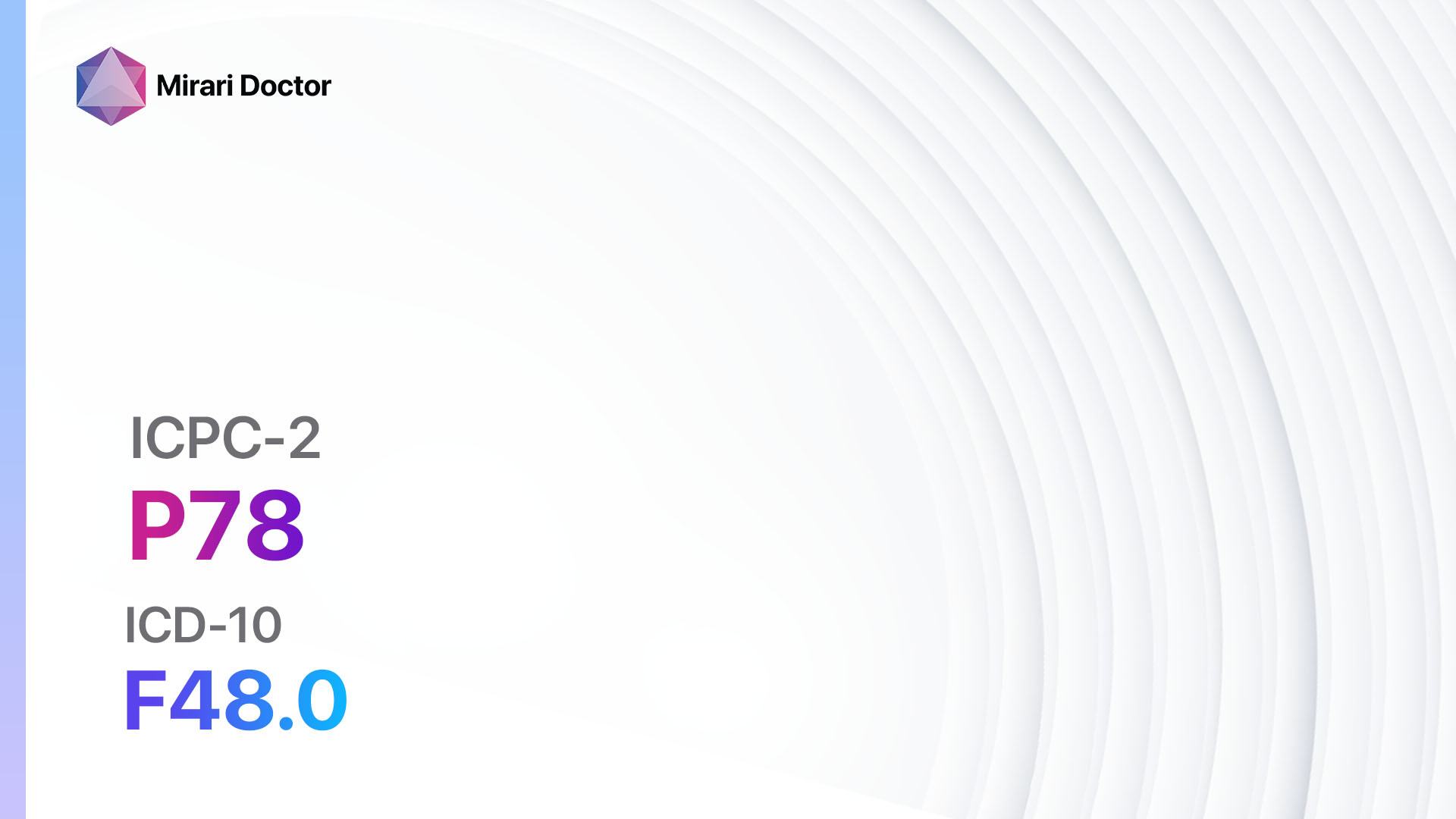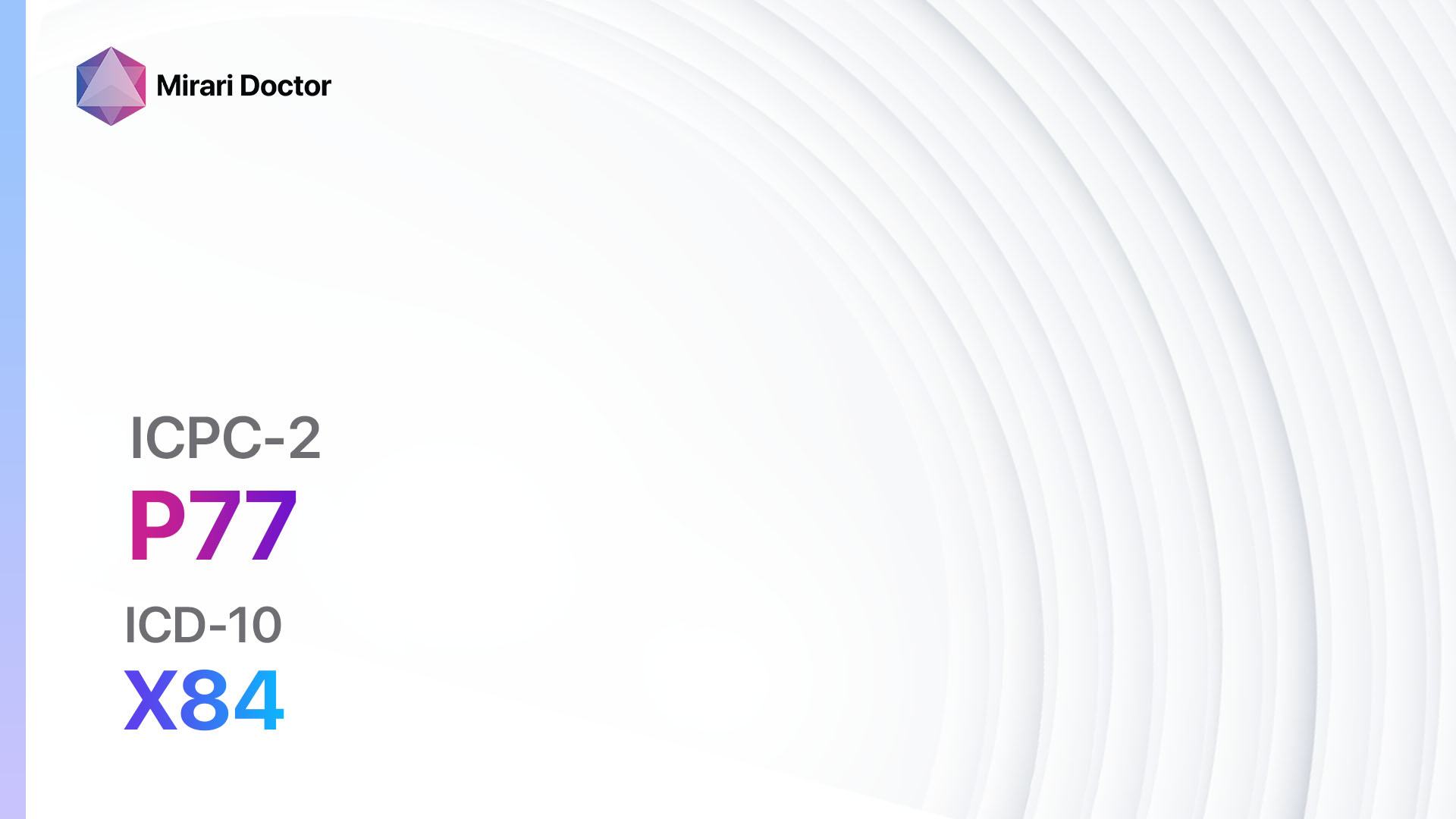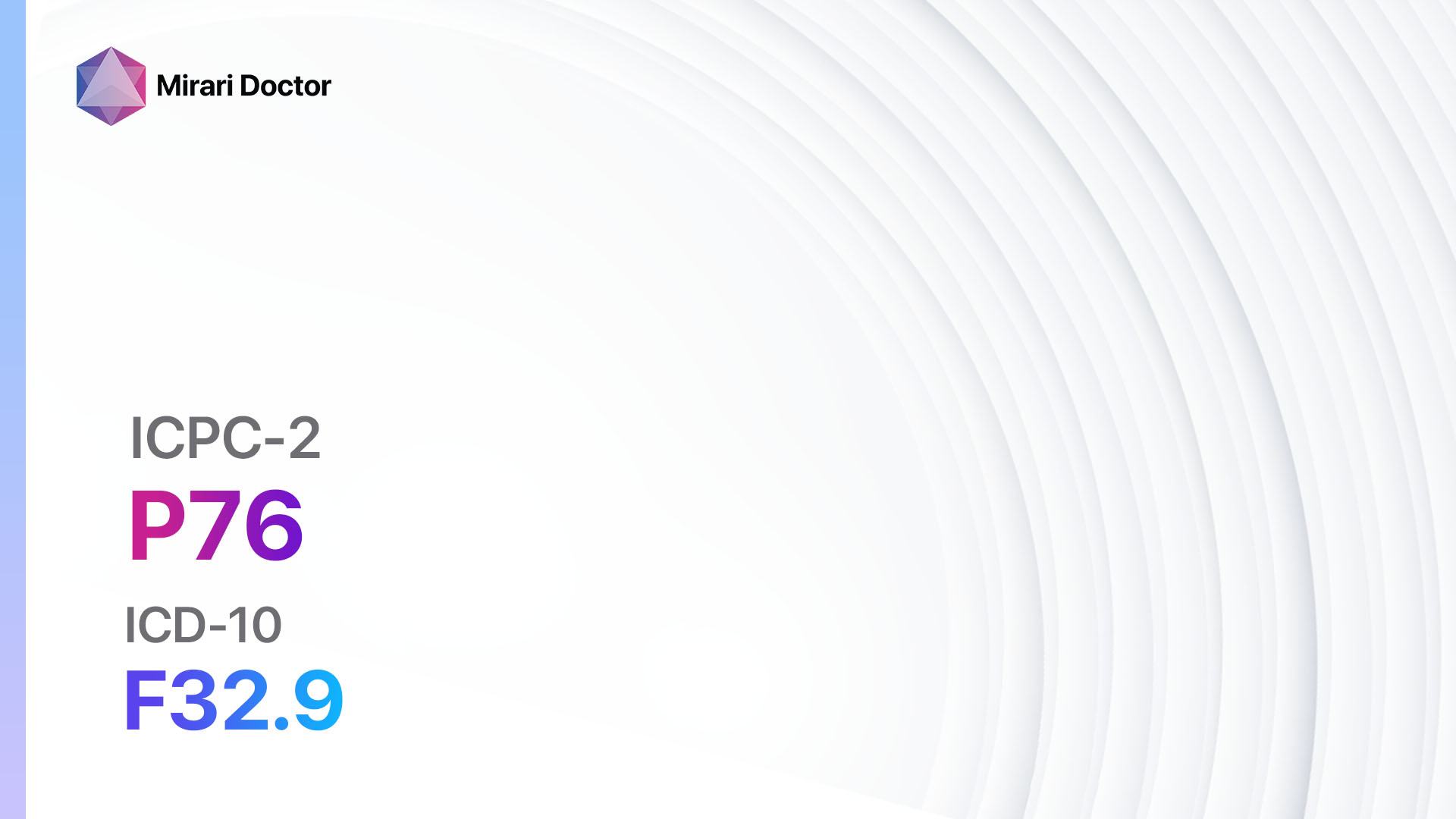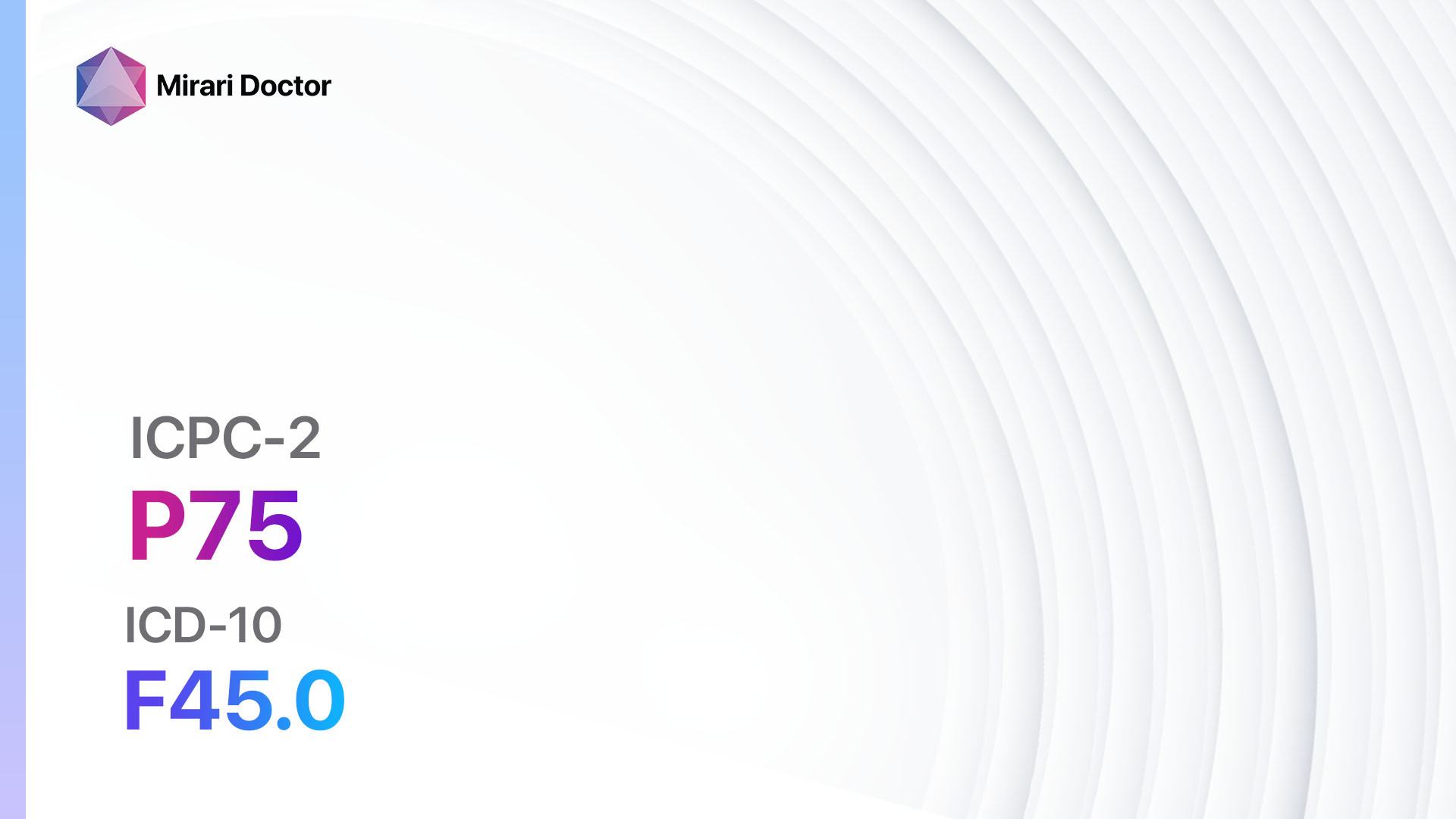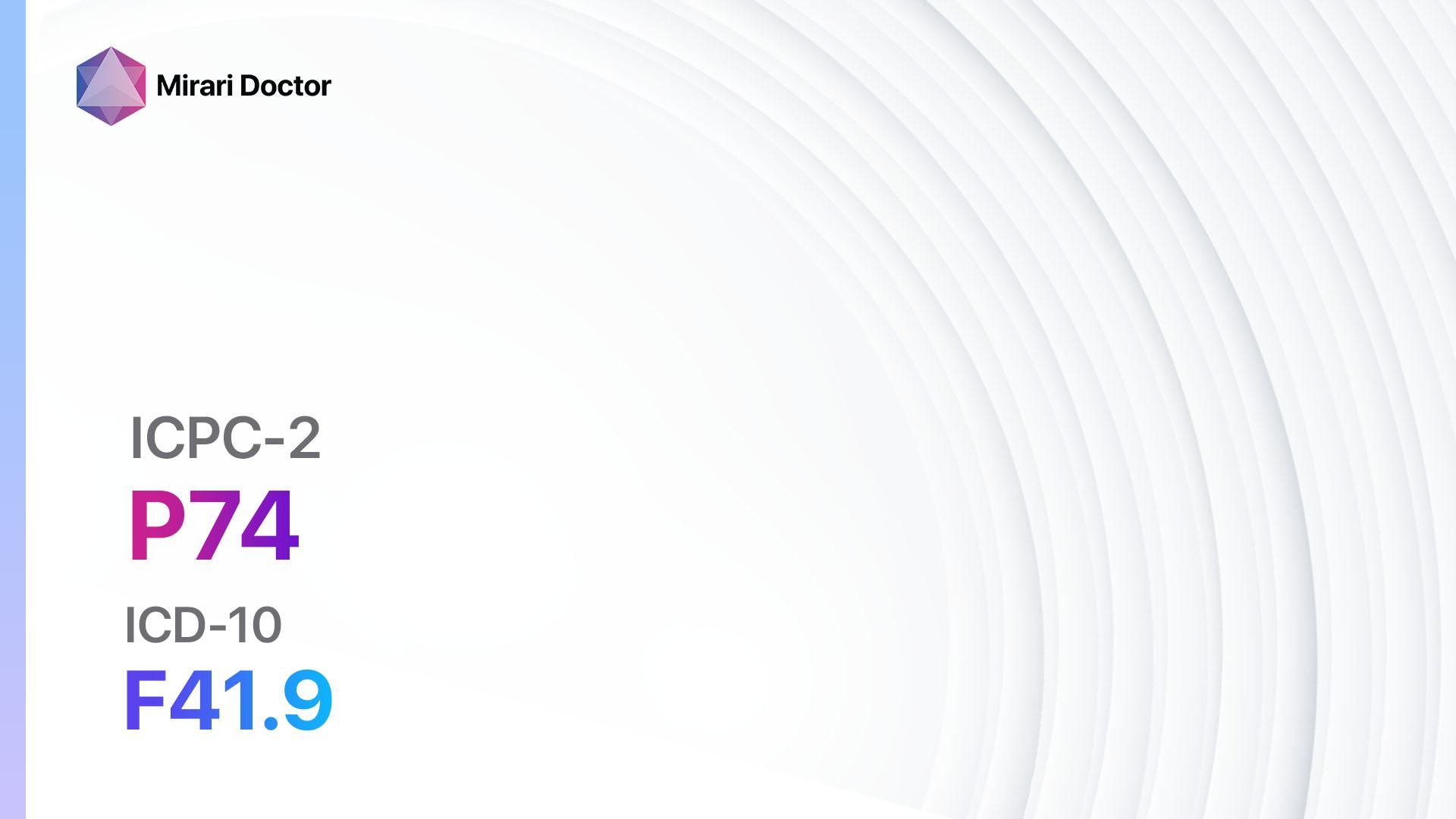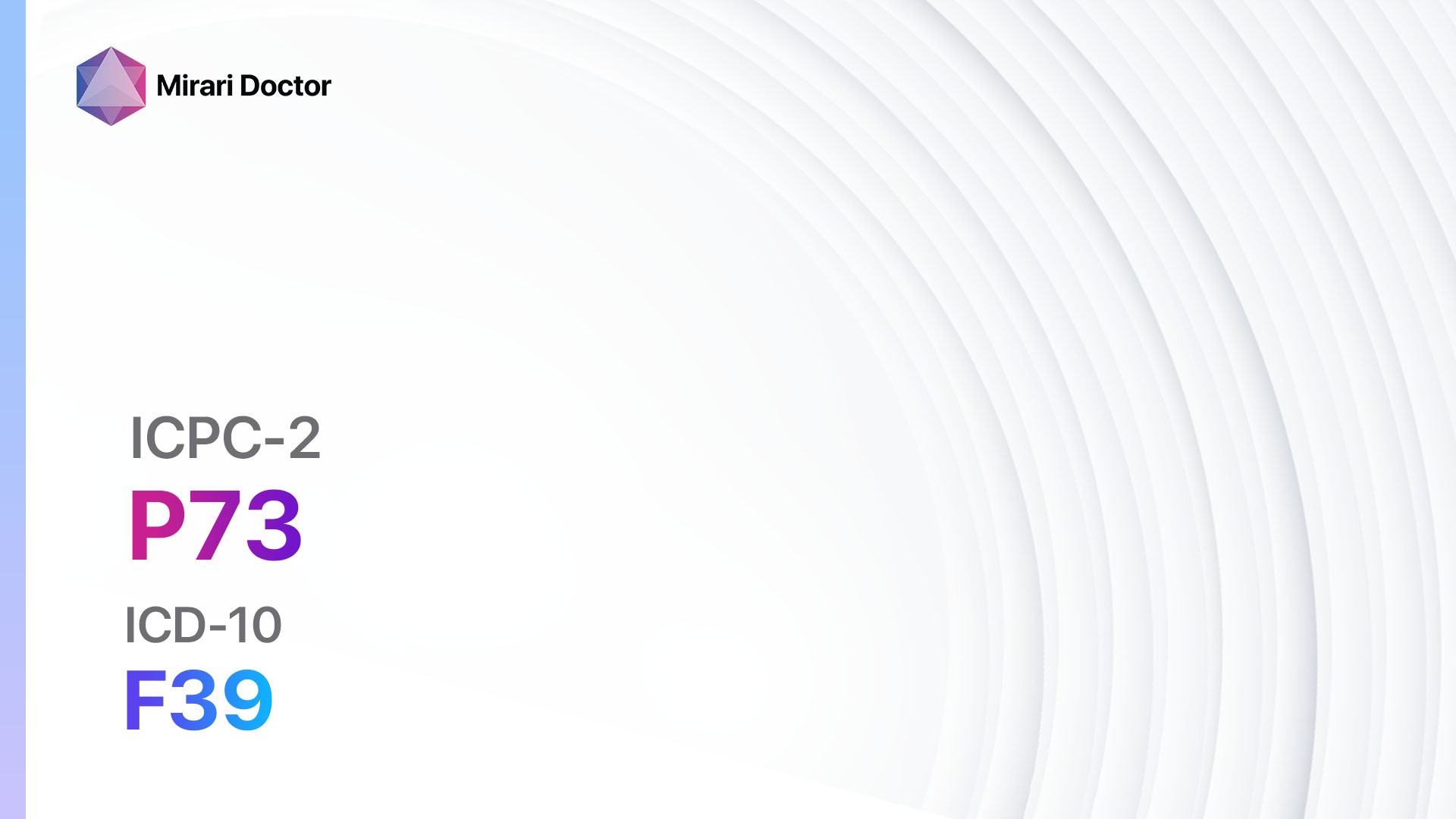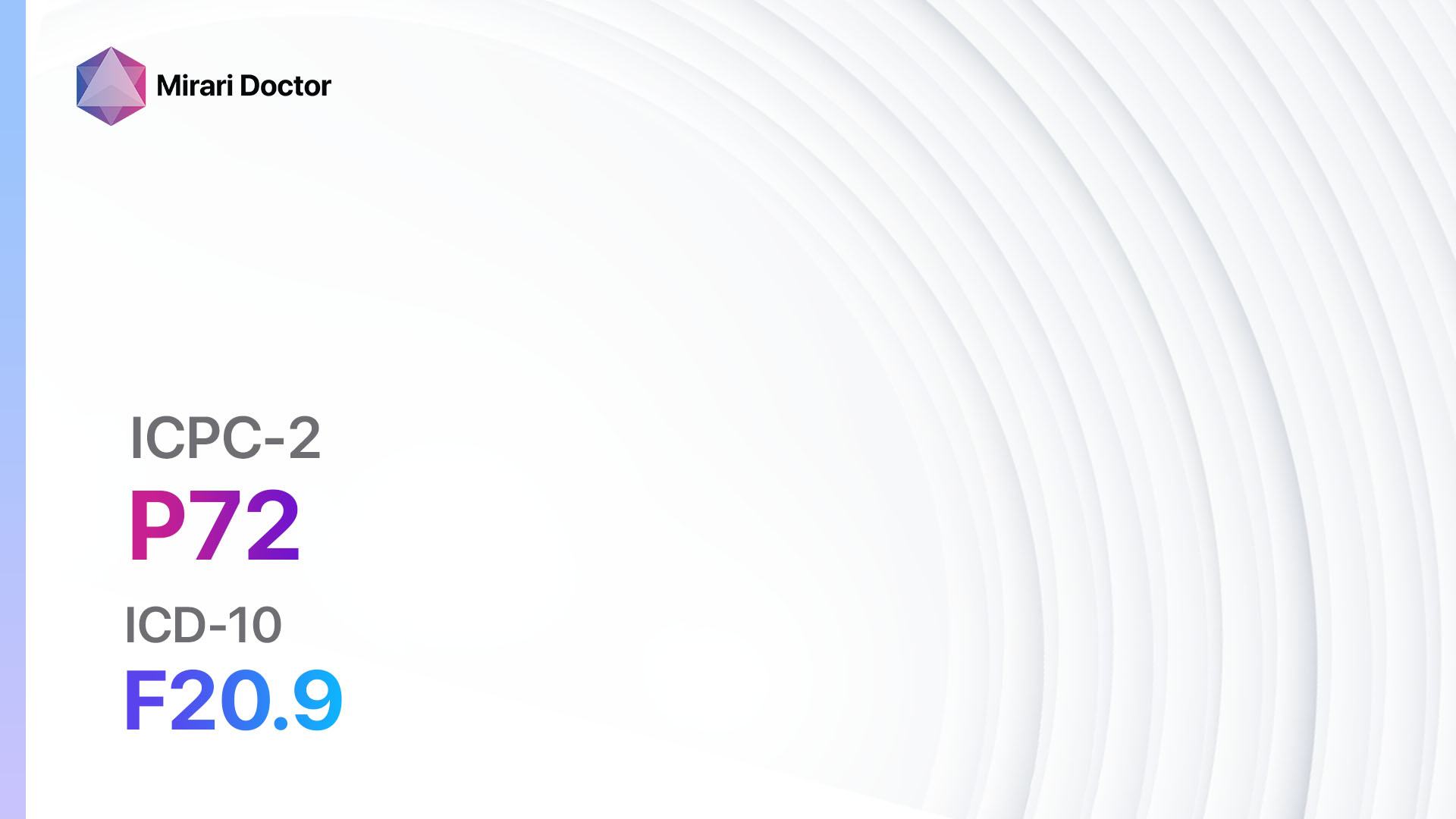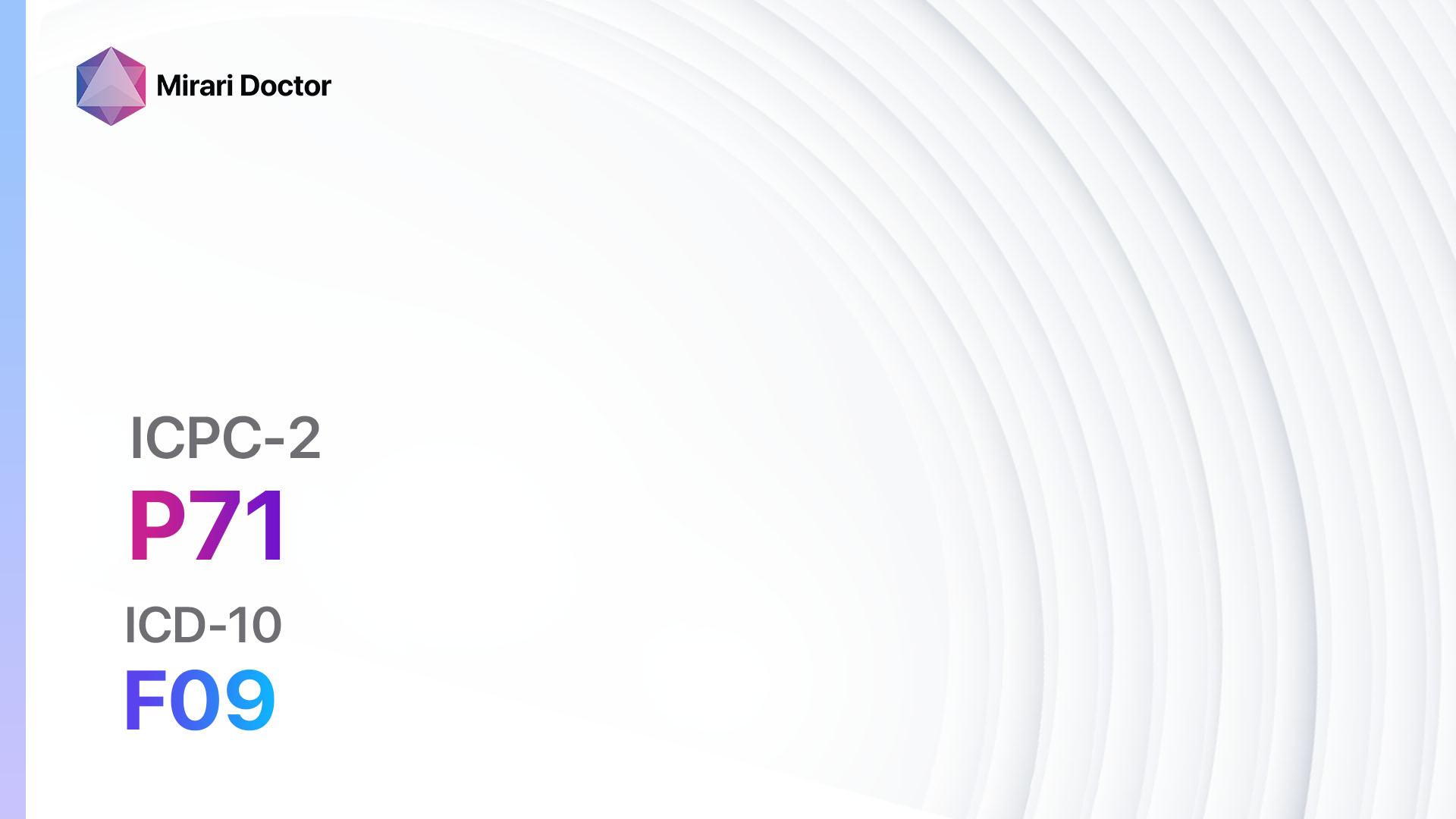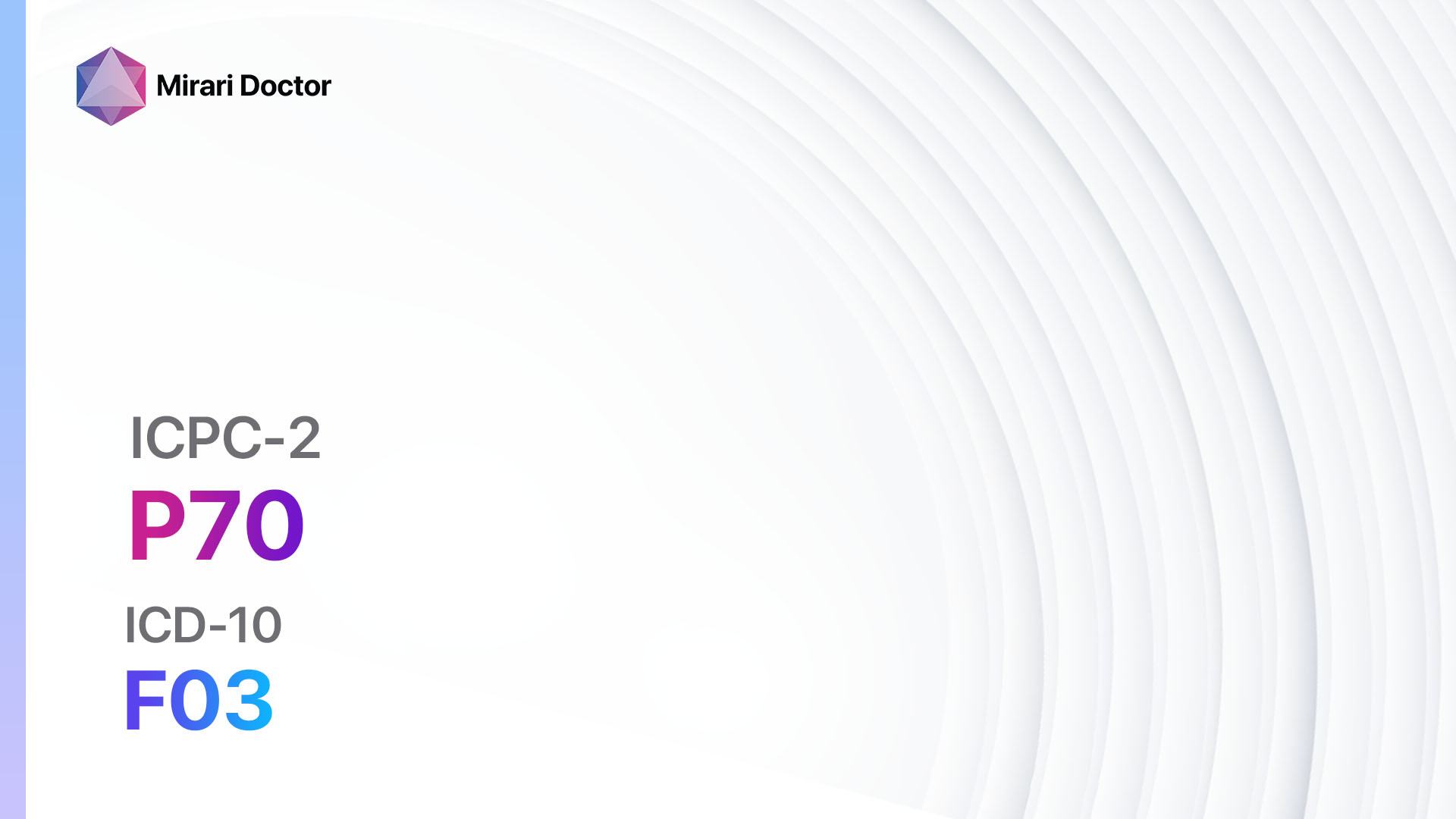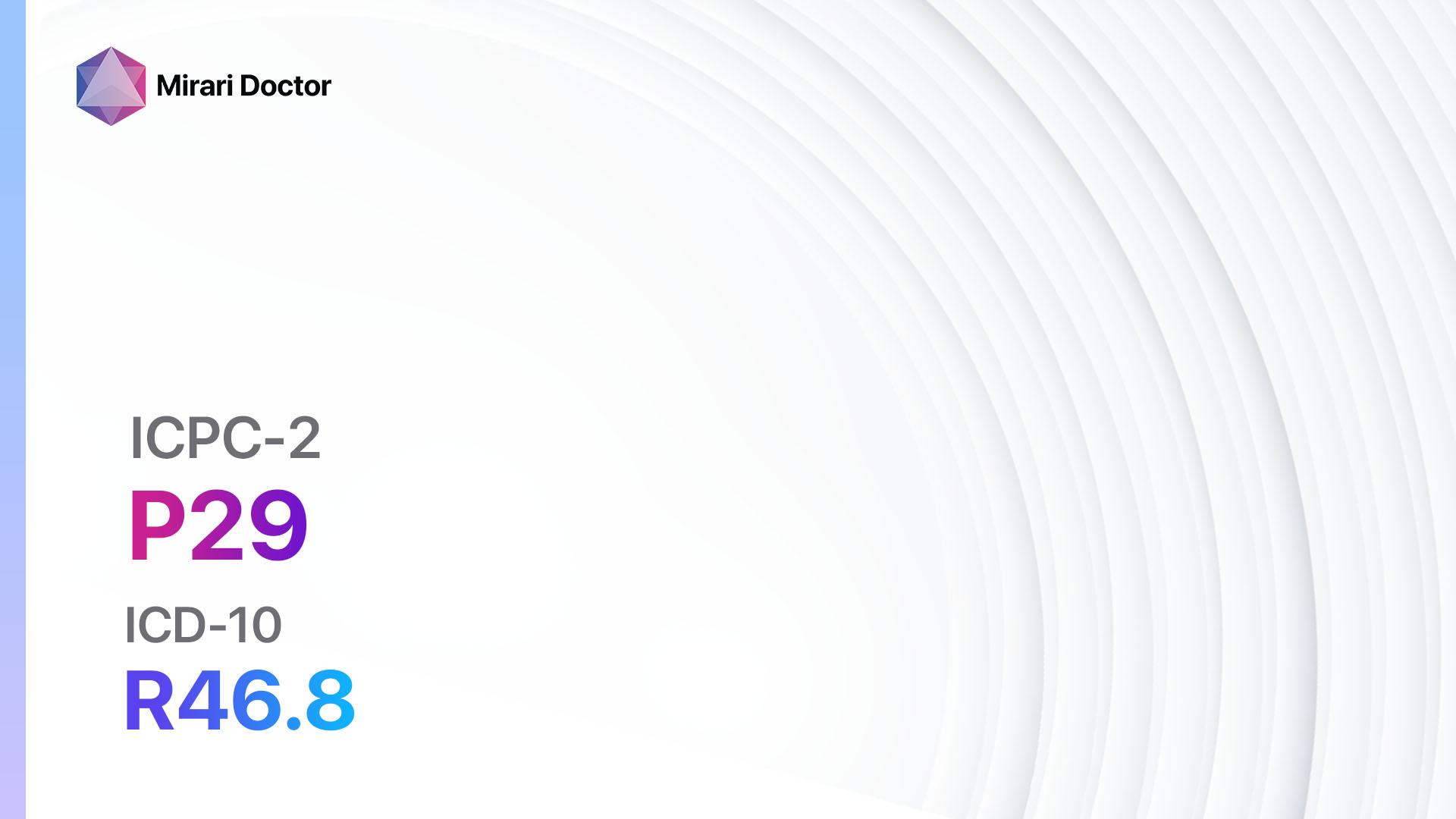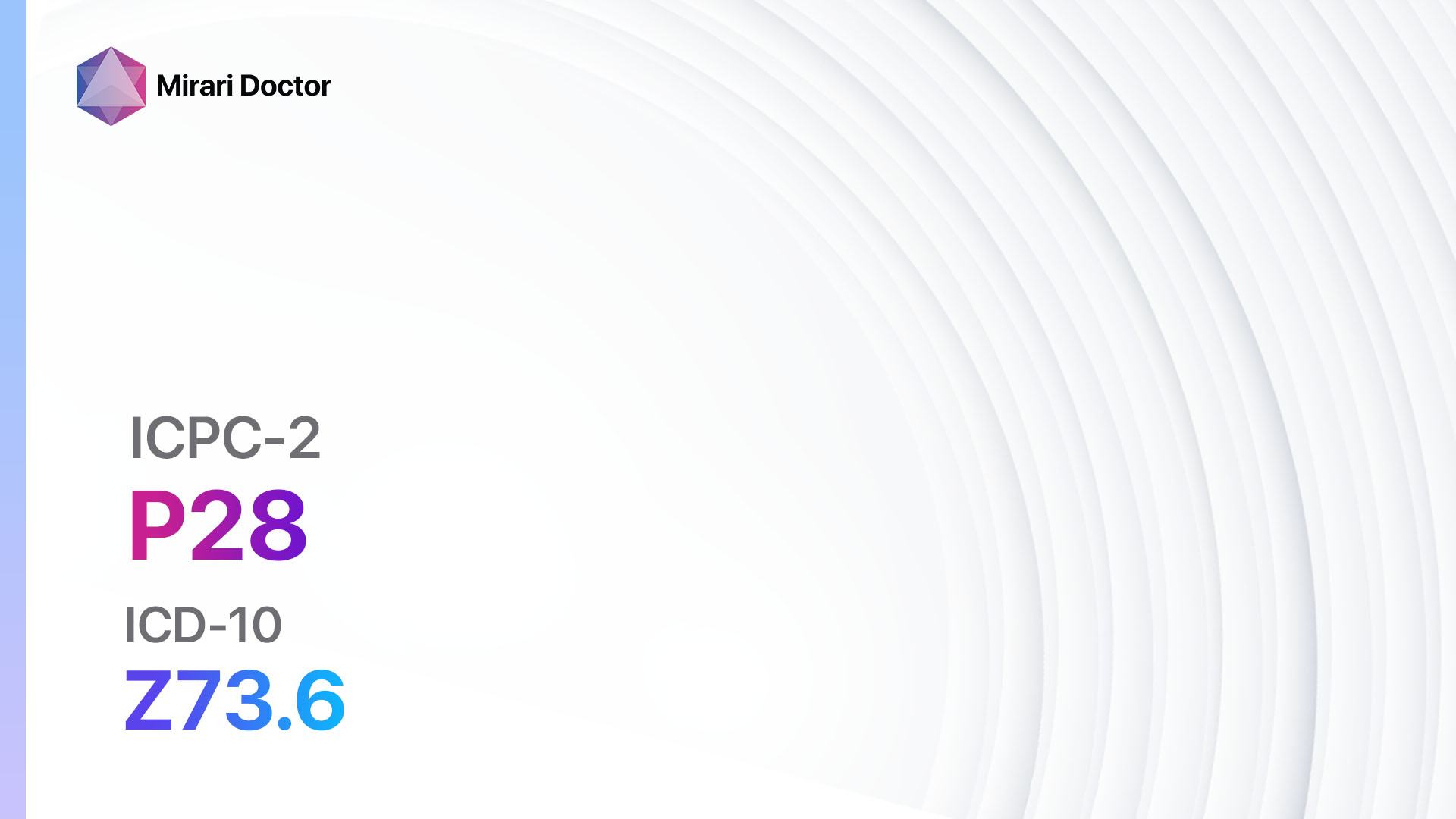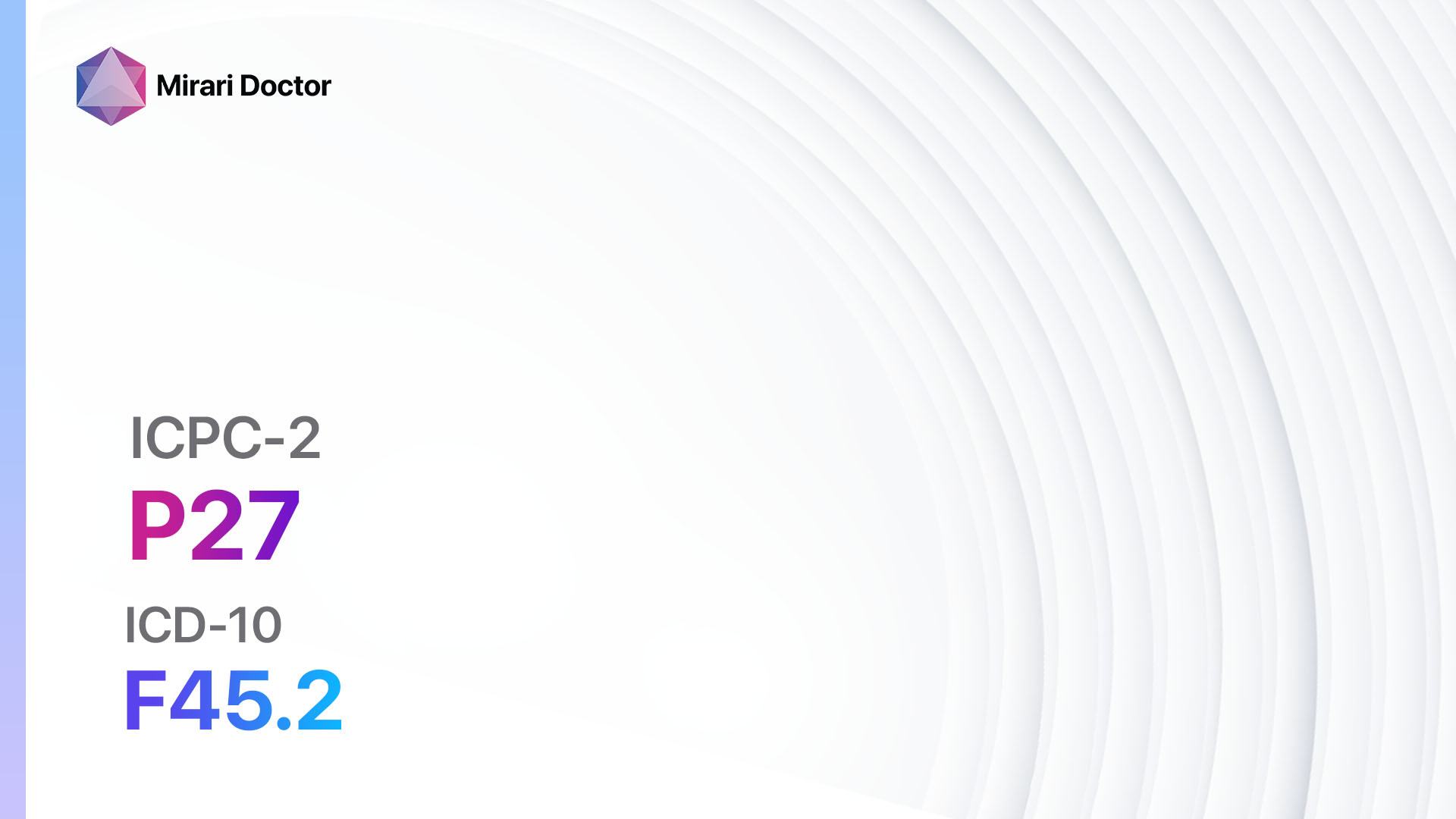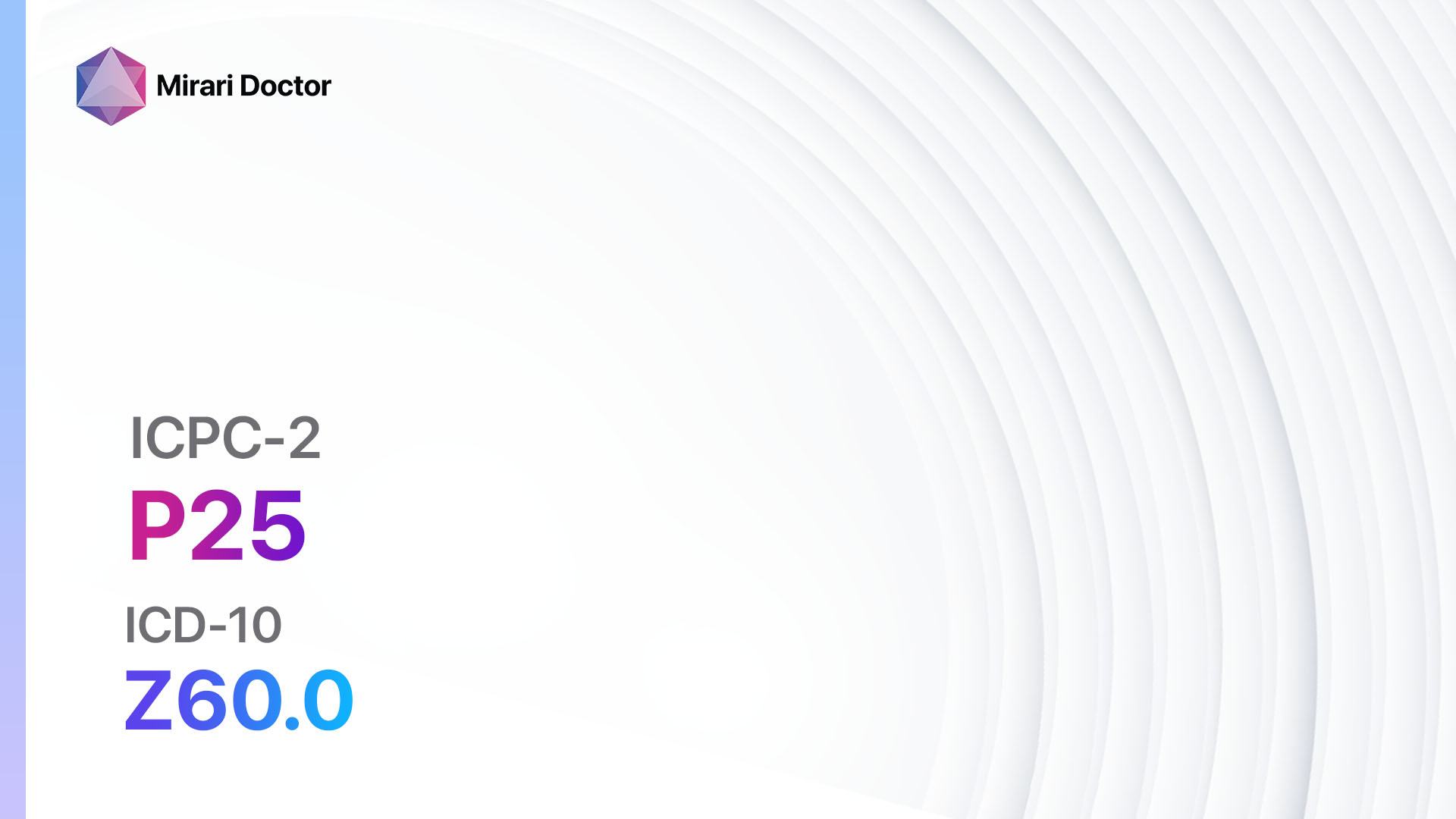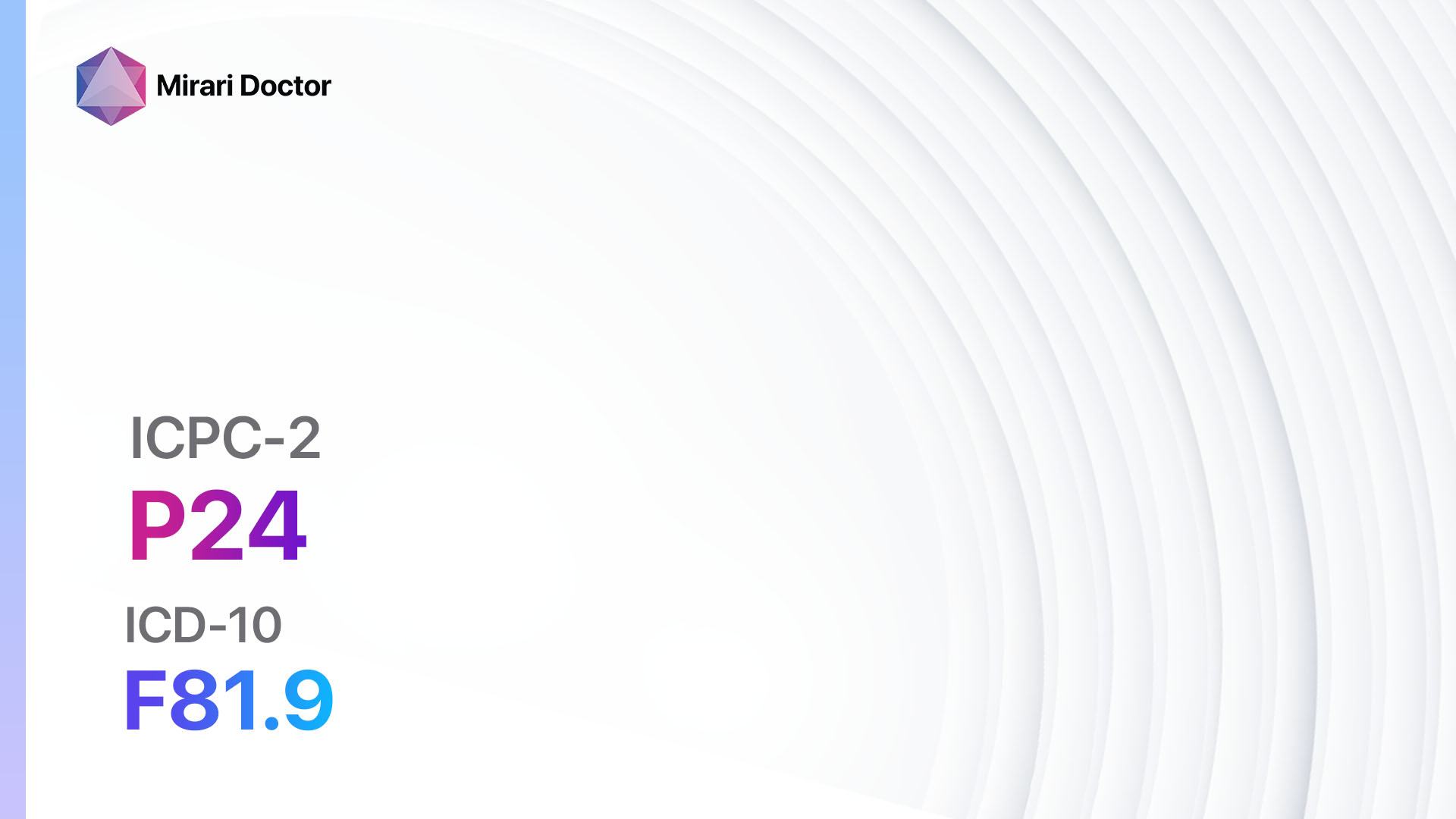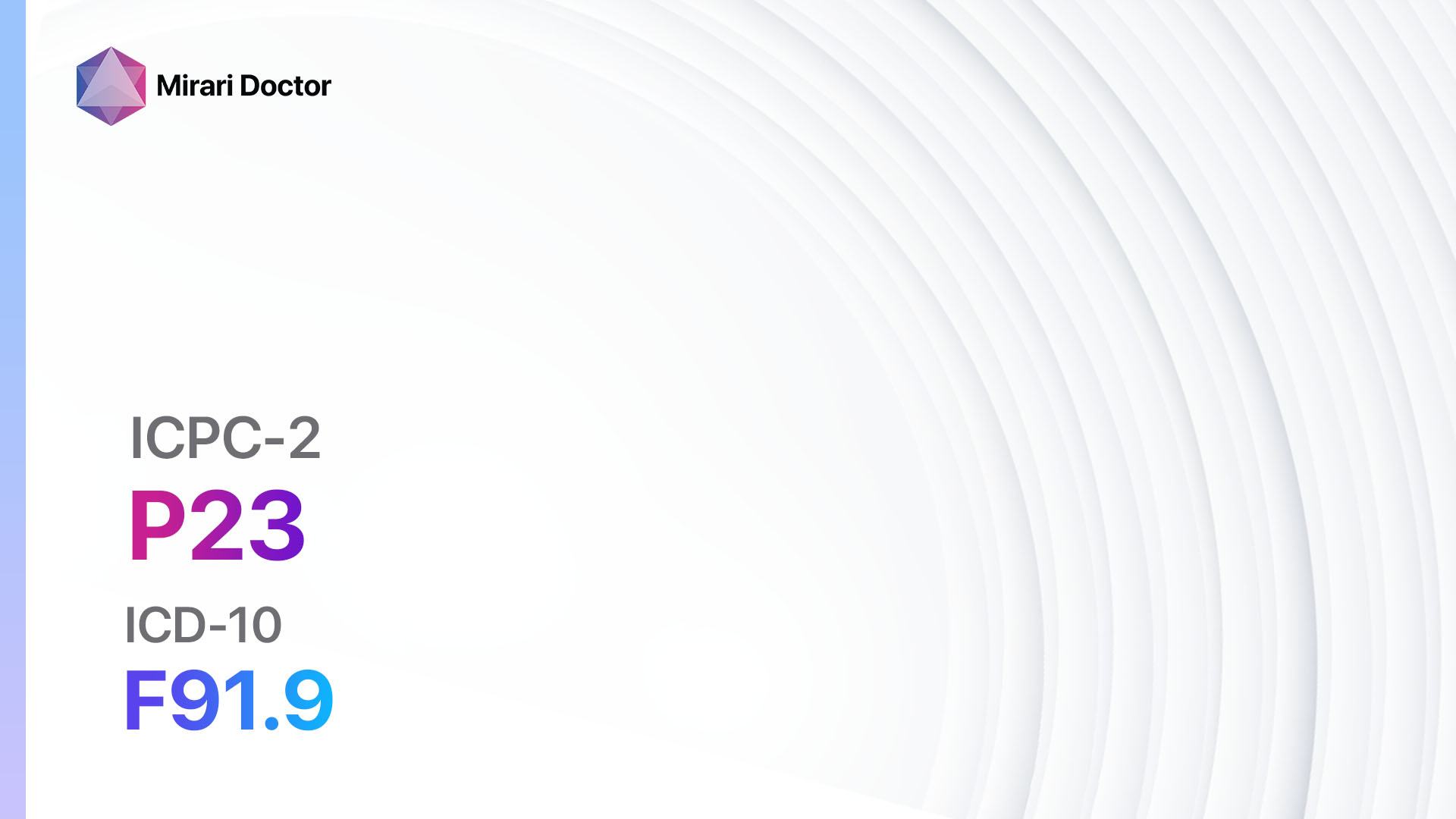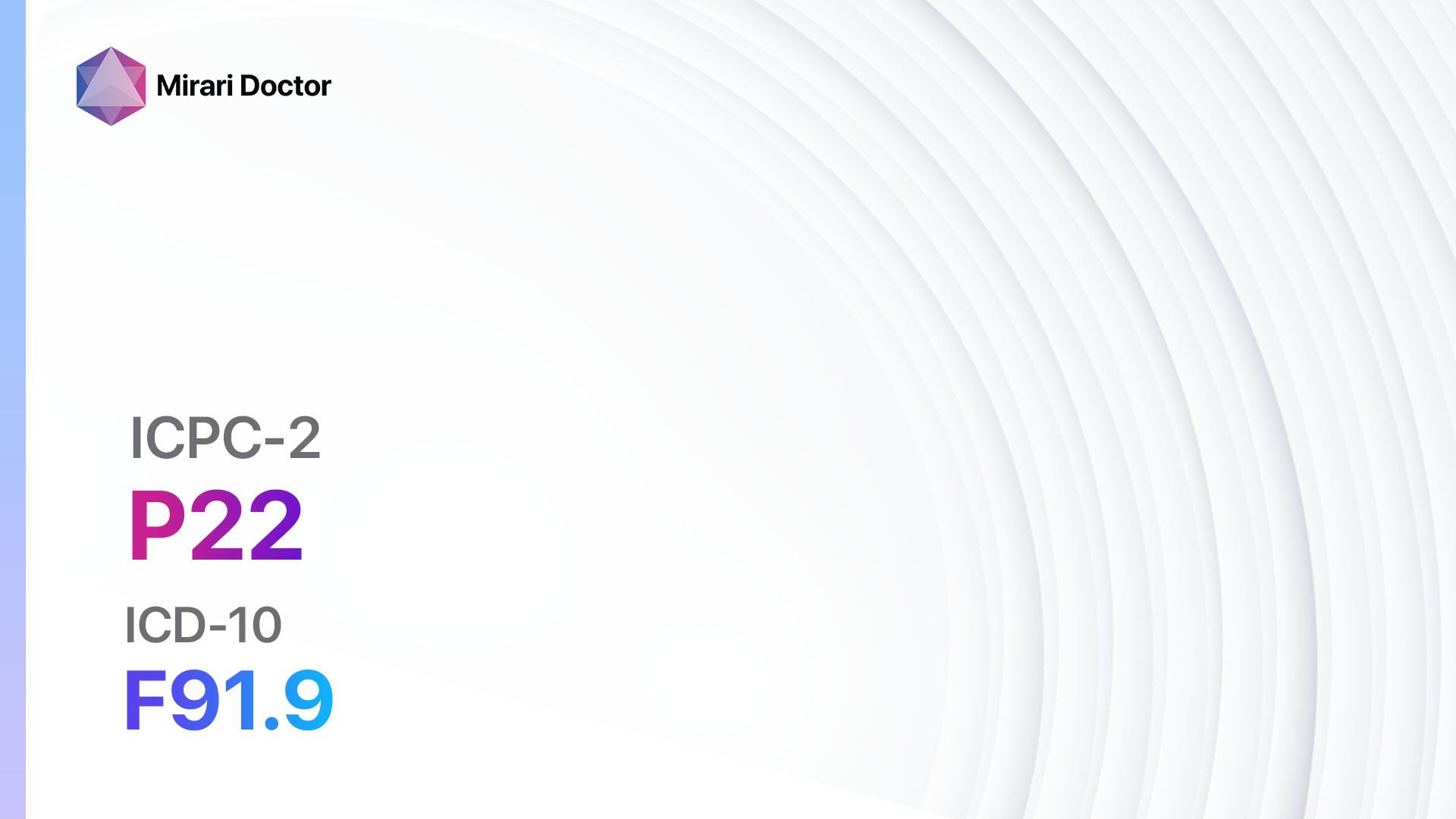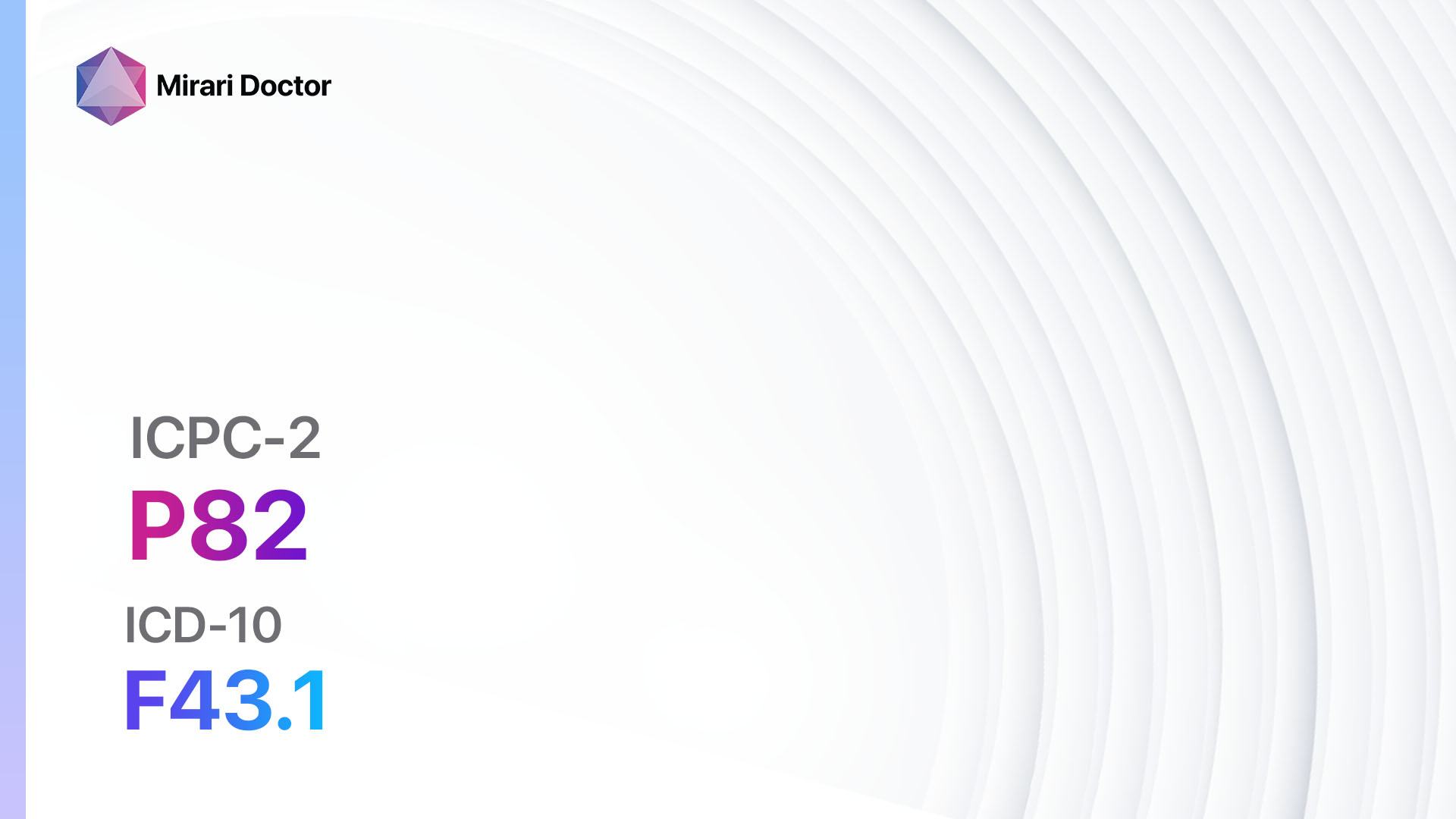
Introduction
Post-traumatic stress disorder (PTSD) is a mental health condition that can develop after experiencing or witnessing a traumatic event. It is characterized by symptoms such as flashbacks, nightmares, and severe anxiety[1]. The aim of this guide is to provide a comprehensive overview of the symptoms, causes, diagnostic steps, possible interventions, and lifestyle interventions for PTSD.
Codes
Symptoms
- Re-experiencing the traumatic event through flashbacks, nightmares, or intrusive thoughts[2]
- Avoidance of reminders of the traumatic event, including places, people, or activities[3]
- Negative changes in thoughts and mood, such as feelings of guilt, shame, or detachment[4]
- Hyperarousal, including irritability, difficulty sleeping, and being easily startled[5]
Causes
- Exposure to a traumatic event, such as a natural disaster, combat, or physical or sexual assault[6]
- Personal or family history of mental health conditions, such as anxiety or depression[7]
- Lack of social support or coping skills[8]
Diagnostic Steps
Medical History
- Gather information about the traumatic event, including the nature of the event, the duration, and the individual’s response to it[9]
- Assess for any previous history of trauma or mental health conditions.
- Evaluate the individual’s social support system and coping mechanisms.
Physical Examination
- Perform a general physical examination to rule out any underlying medical conditions that may be contributing to the symptoms.
- Assess vital signs, including blood pressure, heart rate, and respiratory rate.
- Evaluate for any physical signs of self-harm or substance abuse.
Laboratory Tests
- There are no specific laboratory tests to diagnose PTSD.
- However, blood tests may be performed to rule out any underlying medical conditions or to assess for substance abuse.
Diagnostic Imaging
- Diagnostic imaging is not typically used in the diagnosis of PTSD.
Other Tests
- Psychological tests, such as the Clinician-Administered PTSD Scale (CAPS) or the PTSD Checklist for DSM-5 (PCL-5), may be used to assess the severity of symptoms and aid in diagnosis[10]
- Assessment of the individual’s level of functioning and quality of life may also be helpful in determining the impact of PTSD on daily activities.
Follow-up and Patient Education
- Schedule regular follow-up appointments to monitor the individual’s progress and adjust treatment as needed.
- Provide education on coping strategies, stress management techniques, and the importance of self-care.
- Encourage the individual to seek support from family, friends, or support groups.
Possible Interventions
Traditional Interventions
Medications:
Top 5 drugs for Post-traumatic stress disorder:
- Selective serotonin reuptake inhibitors (SSRIs) (e.g., Sertraline, Paroxetine):
- Cost: Generic versions can be $10-$50/month.
- Contraindications: Hypersensitivity to SSRIs, concurrent use of monoamine oxidase inhibitors (MAOIs).
- Side effects: Nausea, headache, insomnia.
- Severe side effects: Serotonin syndrome, suicidal thoughts.
- Drug interactions: MAOIs, other serotonergic medications.
- Warning: May increase the risk of suicidal thoughts, especially in children and young adults.
- Serotonin-norepinephrine reuptake inhibitors (SNRIs) (e.g., Venlafaxine, Duloxetine):
- Cost: Generic versions can be $10-$50/month.
- Contraindications: Hypersensitivity to SNRIs, concurrent use of MAOIs.
- Side effects: Nausea, dizziness, insomnia.
- Severe side effects: Serotonin syndrome, suicidal thoughts.
- Drug interactions: MAOIs, other serotonergic medications.
- Warning: May increase the risk of suicidal thoughts, especially in children and young adults.
- Prazosin (specifically for nightmares associated with PTSD):
- Cost: Generic versions can be $10-$50/month.
- Contraindications: Hypersensitivity to prazosin, concurrent use of other alpha-blockers.
- Side effects: Dizziness, low blood pressure, headache.
- Severe side effects: Fainting, irregular heartbeat.
- Drug interactions: Other alpha-blockers, medications that lower blood pressure.
- Warning: May cause drowsiness, especially when starting or increasing the dose.
- Benzodiazepines (e.g., Alprazolam, Clonazepam):
- Cost: Generic versions can be $10-$50/month.
- Contraindications: Hypersensitivity to benzodiazepines, history of substance abuse.
- Side effects: Drowsiness, confusion, impaired coordination.
- Severe side effects: Respiratory depression, dependence.
- Drug interactions: Other sedatives, alcohol.
- Warning: Should be used with caution due to the risk of dependence and withdrawal symptoms.
- Antipsychotics (e.g., Risperidone, Quetiapine):
- Cost: Generic versions can be $10-$50/month.
- Contraindications: Hypersensitivity to antipsychotics, history of certain cardiac conditions.
- Side effects: Weight gain, sedation, extrapyramidal symptoms.
- Severe side effects: Neuroleptic malignant syndrome, tardive dyskinesia.
- Drug interactions: Other medications that prolong the QT interval, certain antidepressants.
- Warning: May increase the risk of metabolic syndrome and diabetes.
Alternative Drugs:
- Alpha-2 adrenergic agonists (e.g., Clonidine): May be used for hyperarousal symptoms associated with PTSD.
- Anticonvulsants (e.g., Pregabalin): May be used for anxiety symptoms associated with PTSD.
- Beta-blockers (e.g., Propranolol): May be used for specific symptoms, such as performance anxiety or nightmares.
- Atypical antipsychotics (e.g., Olanzapine): May be used for specific symptoms, such as severe agitation or aggression.
Psychotherapy:
- Cognitive-behavioral therapy (CBT): Helps individuals identify and change negative thought patterns and behaviors associated with PTSD.
- Eye movement desensitization and reprocessing (EMDR): Involves the use of eye movements or other bilateral stimulation to process traumatic memories and reduce distress.
- Prolonged exposure therapy: Involves gradually confronting and processing traumatic memories and situations that have been avoided.
- Group therapy: Provides support and validation from others who have experienced similar traumas.
- Family therapy: Involves the individual’s family members in the treatment process to improve communication and support.
Surgical Procedures:
- There are no surgical procedures specifically indicated for the treatment of PTSD.
Alternative Interventions
- Mindfulness meditation: May help individuals develop awareness and acceptance of their thoughts and emotions. Cost: Free to $100 for guided sessions.
- Yoga: Combines physical postures, breathing exercises, and meditation to promote relaxation and reduce stress. Cost: $10-$20 per class.
- Acupuncture: May help reduce anxiety and promote relaxation. Cost: $60-$120 per session.
- Art therapy: Provides a creative outlet for individuals to express and process their emotions. Cost: Varies depending on the art supplies and facilitator fees.
- Animal-assisted therapy: Involves interactions with trained animals to promote emotional healing and reduce anxiety. Cost: Varies depending on the therapy provider.
Lifestyle Interventions
- Regular exercise: Engaging in physical activity can help reduce symptoms of anxiety and depression. Cost: Free to gym membership fees.
- Healthy diet: Consuming a balanced diet rich in fruits, vegetables, whole grains, and lean proteins can support overall mental health. Cost: Varies depending on food choices.
- Adequate sleep: Establishing a regular sleep routine and practicing good sleep hygiene can improve sleep quality. Cost: Free.
- Stress management techniques: Learning and practicing stress management techniques, such as deep breathing exercises or progressive muscle relaxation, can help reduce anxiety. Cost: Free.
- Social support: Building and maintaining strong social connections can provide emotional support and reduce feelings of isolation. Cost: Varies depending on social activities.
It is important to note that the cost ranges provided are approximate and may vary depending on the location and availability of the interventions.
Mirari Cold Plasma Alternative Intervention
Understanding Mirari Cold Plasma
- Safe and Non-Invasive Treatment: Mirari Cold Plasma is a safe and non-invasive treatment option for various skin conditions. It does not require incisions, minimizing the risk of scarring, bleeding, or tissue damage.
- Efficient Extraction of Foreign Bodies: Mirari Cold Plasma facilitates the removal of foreign bodies from the skin by degrading and dissociating organic matter, allowing easier access and extraction.
- Pain Reduction and Comfort: Mirari Cold Plasma has a local analgesic effect, providing pain relief during the treatment, making it more comfortable for the patient.
- Reduced Risk of Infection: Mirari Cold Plasma has antimicrobial properties, effectively killing bacteria and reducing the risk of infection.
- Accelerated Healing and Minimal Scarring: Mirari Cold Plasma stimulates wound healing and tissue regeneration, reducing healing time and minimizing the formation of scars.
Mirari Cold Plasma Prescription
Video instructions for using Mirari Cold Plasma Device – P82 Post-traumatic stress disorder (ICD-10:F43.1)
| Mild | Moderate | Severe |
| Mode setting: 2 (Wound Healing) Location: 7 (Neuro system & ENT) Morning: 15 minutes, Evening: 15 minutes | Mode setting: 2 (Wound Healing) Location: 7 (Neuro system & ENT) Morning: 30 minutes, Lunch: 30 minutes, Evening: 30 minutes | Mode setting: 2 (Wound Healing) Location: 7 (Neuro system & ENT) Morning: 30 minutes, Lunch: 30 minutes, Evening: 30 minutes |
| Mode setting: 7 (Immunotherapy) Location: 1 (Sacrum) Morning: 15 minutes, Evening: 15 minutes | Mode setting: 7 (Immunotherapy) Location: 1 (Sacrum) Morning: 30 minutes, Lunch: 30 minutes, Evening: 30 minutes | Mode setting: 7 (Immunotherapy) Location: 1 (Sacrum) Morning: 30 minutes, Lunch: 30 minutes, Evening: 30 minutes |
| Total Morning:30minutesapprox.$5USD, Evening:30minutesapprox.$5USD | Total Morning:60minutesapprox.$10USD, Lunch:60minutesapprox. $10 USD, Evening:60minutesapprox. $10 USD, | Total Morning:60minutesapprox.$10USD, Lunch:60minutesapprox. $10 USD, Evening:60minutesapprox. $10 USD, |
| Usualtreatmentfor7-60daysapprox.$70USD–$600USD | Usualtreatmentfor6-8weeksapprox.$1,260USD–$1,680USD | Usualtreatmentfor3-6monthsapprox.$2,700USD–$5,400USD |
 |
|
Use the Mirari Cold Plasma device to treat Post-traumatic stress disorder effectively.
WARNING: MIRARI COLD PLASMA IS DESIGNED FOR THE HUMAN BODY WITHOUT ANY ARTIFICIAL OR THIRD PARTY PRODUCTS. USE OF OTHER PRODUCTS IN COMBINATION WITH MIRARI COLD PLASMA MAY CAUSE UNPREDICTABLE EFFECTS, HARM OR INJURY. PLEASE CONSULT A MEDICAL PROFESSIONAL BEFORE COMBINING ANY OTHER PRODUCTS WITH USE OF MIRARI.
Step 1: Cleanse the Skin
- Start by cleaning the affected area of the skin with a gentle cleanser or mild soap and water. Gently pat the area dry with a clean towel.
Step 2: Prepare the Mirari Cold Plasma device
- Ensure that the Mirari Cold Plasma device is fully charged or has fresh batteries as per the manufacturer’s instructions. Make sure the device is clean and in good working condition.
- Switch on the Mirari device using the power button or by following the specific instructions provided with the device.
- Some Mirari devices may have adjustable settings for intensity or treatment duration. Follow the manufacturer’s instructions to select the appropriate settings based on your needs and the recommended guidelines.
Step 3: Apply the Device
- Place the Mirari device in direct contact with the affected area of the skin. Gently glide or hold the device over the skin surface, ensuring even coverage of the area experiencing.
- Slowly move the Mirari device in a circular motion or follow a specific pattern as indicated in the user manual. This helps ensure thorough treatment coverage.
Step 4: Monitor and Assess:
- Keep track of your progress and evaluate the effectiveness of the Mirari device in managing your Post-traumatic stress disorder. If you have any concerns or notice any adverse reactions, consult with your health care professional.
Note
This guide is for informational purposes only and should not replace the advice of a medical professional. Always consult with your healthcare provider or a qualified medical professional for personal advice, diagnosis, or treatment. Do not solely rely on the information presented here for decisions about your health. Use of this information is at your own risk. The authors of this guide, nor any associated entities or platforms, are not responsible for any potential adverse effects or outcomes based on the content.
Mirari Cold Plasma System Disclaimer
- Purpose: The Mirari Cold Plasma System is a Class 2 medical device designed for use by trained healthcare professionals. It is registered for use in Thailand and Vietnam. It is not intended for use outside of these locations.
- Informational Use: The content and information provided with the device are for educational and informational purposes only. They are not a substitute for professional medical advice or care.
- Variable Outcomes: While the device is approved for specific uses, individual outcomes can differ. We do not assert or guarantee specific medical outcomes.
- Consultation: Prior to utilizing the device or making decisions based on its content, it is essential to consult with a Certified Mirari Tele-Therapist and your medical healthcare provider regarding specific protocols.
- Liability: By using this device, users are acknowledging and accepting all potential risks. Neither the manufacturer nor the distributor will be held accountable for any adverse reactions, injuries, or damages stemming from its use.
- Geographical Availability: This device has received approval for designated purposes by the Thai and Vietnam FDA. As of now, outside of Thailand and Vietnam, the Mirari Cold Plasma System is not available for purchase or use.
References
- American Psychiatric Association. (2013). Diagnostic and statistical manual of mental disorders (5th ed.).//doi.org/10.1176/appi.books.9780890425596
- Bisson, J. I., Cosgrove, S., Lewis, C., & Robert, N. P. (2015). Post-traumatic stress disorder. BMJ, 351, h6161.//doi.org/10.1136/bmj.h6161
- Sareen, J. (2014). Posttraumatic stress disorder in adults: impact, comorbidity, risk factors, and treatment. Canadian Journal of Psychiatry, 59(9), 460–467.//doi.org/10.1177/070674371405900902
- Yehuda, R., Hoge, C. W., McFarlane, A. C., Vermetten, E., Lanius, R. A., Nievergelt, C. M., Hobfoll, S. E., Koenen, K. C., Neylan, T. C., & Hyman, S. E. (2015). Post-traumatic stress disorder. Nature Reviews Disease Primers, 1, 15057.//doi.org/10.1038/nrdp.2015.57
- Shalev, A., Liberzon, I., & Marmar, C. (2017). Post-Traumatic Stress Disorder. New England Journal of Medicine, 376(25), 2459–2469.//doi.org/10.1056/NEJMra1612499
- Kessler, R. C., Aguilar-Gaxiola, S., Alonso, J., Benjet, C., Bromet, E. J., Cardoso, G., Degenhardt, L., de Girolamo, G., Dinolova, R. V., Ferry, F., Florescu, S., Gureje, O., Haro, J. M., Huang, Y., Karam, E. G., Kawakami, N., Lee, S., Lepine, J. P., Levinson, D., Navarro-Mateu, F., … Koenen, K. C. (2017). Trauma and PTSD in the WHO World Mental Health Surveys. European Journal of Psychotraumatology, 8(sup5), 1353383.//doi.org/10.1080/20008198.2017.1353383
- Koenen, K. C., Ratanatharathorn, A., Ng, L., McLaughlin, K. A., Bromet, E. J., Stein, D. J., Karam, E. G., Meron Ruscio, A., Benjet, C., Scott, K., Atwoli, L., Petukhova, M., Lim, C., Aguilar-Gaxiola, S., Al-Hamzawi, A., Alonso, J., Bunting, B., Ciutan, M., de Girolamo, G., Degenhardt, L., … Kessler, R. C. (2017). Posttraumatic stress disorder in the World Mental Health Surveys. Psychological Medicine, 47(13), 2260–2274.//doi.org/10.1017/S0033291717000708
- Ozer, E. J., Best, S. R., Lipsey, T. L., & Weiss, D. S. (2003). Predictors of posttraumatic stress disorder and symptoms in adults: a meta-analysis. Psychological Bulletin, 129(1), 52–73.//doi.org/10.1037/0033-2909.129.1.52
- Spoont, M., Arbisi, P., Fu, S., Greer, N., Kehle-Forbes, S., Meis, L., & Rutks, I. (2013). Screening for Post-Traumatic Stress Disorder (PTSD) in Primary Care: A Systematic Review [Internet]. Washington (DC): Department of Veterans Affairs (US). Available from://www.ncbi.nlm.nih.gov/books/NBK126694/
- Weathers, F. W., Bovin, M. J., Lee, D. J., Sloan, D. M., Schnurr, P. P., Kaloupek, D. G., Keane, T. M., & Marx, B. P. (2018). The Clinician-Administered PTSD Scale for DSM-5 (CAPS-5): Development and initial psychometric evaluation in military veterans. Psychological Assessment, 30(3), 383–395.//doi.org/10.1037/pas0000486
Related articles
Made in USA


